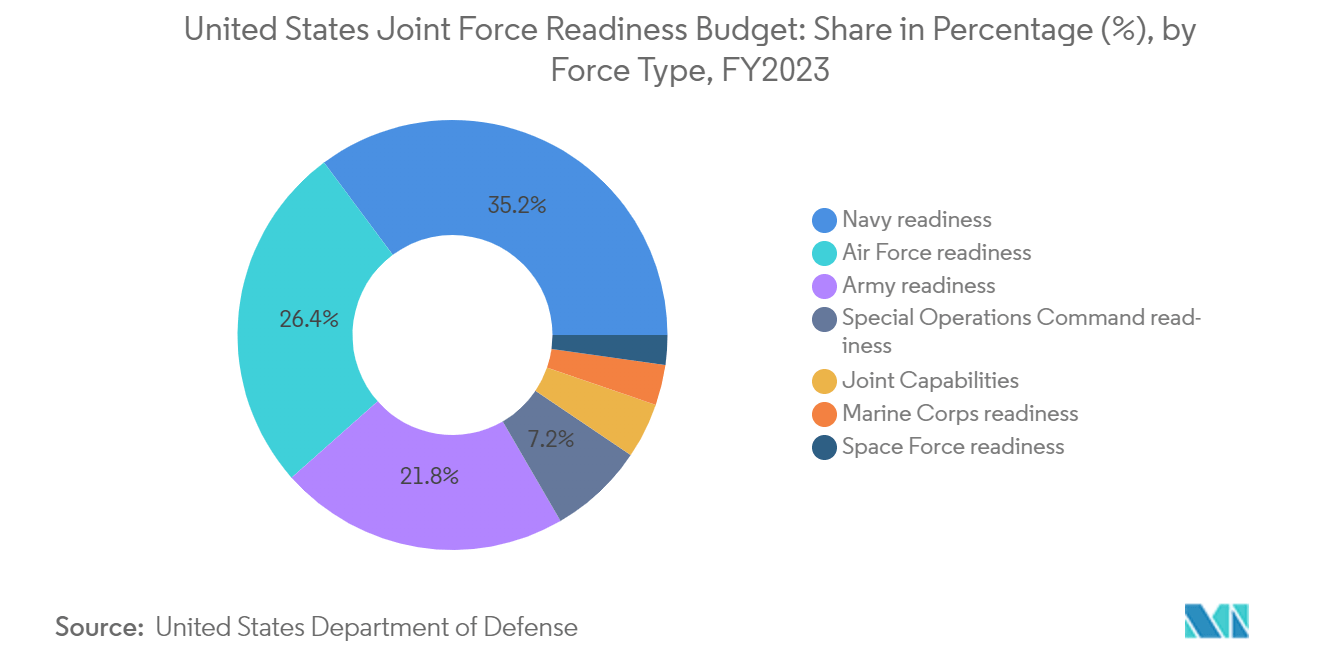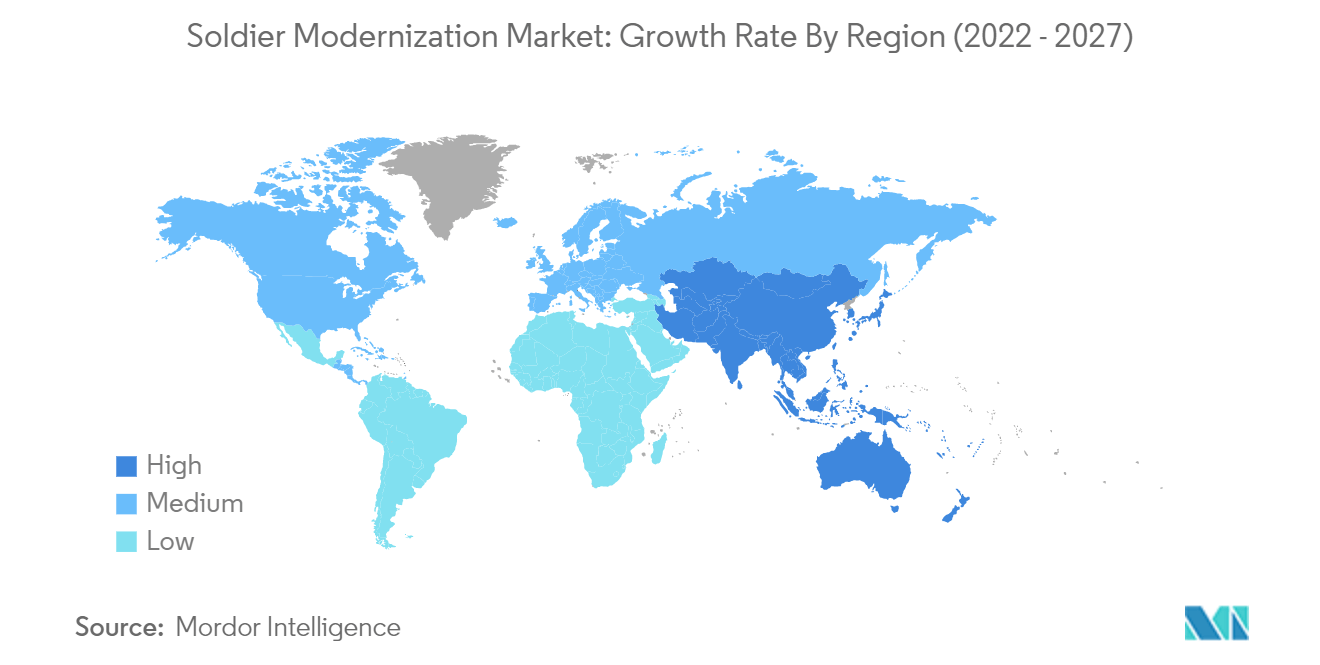Market Trends of Soldier Modernization Industry
This section covers the major market trends shaping the Soldier Modernization Market according to our research experts:
The Increasing Need to Improve the Soldier Effectiveness and Efficiency is Driving the Market
The changing battlefield scenarios are demanding the militaries to equip the soldiers with newer technologies that help them adapt to the changes. The soldier systems need to cater to five primary functional requirements, namely, lethality, survivability, command and control, sustainment, and mobility of the soldier on the battlefield. In this regard, countries are investing in the research and development of advanced soldier systems to enhance their effectiveness on the battlefield, help them gain a tactical advantage, and decrease the overall troop casualties. The areas of interest range from lethality and protection to mobility, command, and control (C2) technology, communication, support, and search and rescue systems across a wide-ranging cross-section of ground, airborne, and maritime environments. For instance, United States Army is currently in plans to procure enhanced protection systems for its troops under the Integrated Head Protection System (IHPS). In September 2021, Avon Protection was awarded a contract worth USD 87.6 million to develop and deliver IHPS to the US Army over a period of two years. The procurement of IHPS is a part of the Soldier Protection System (SPS) program, which also includes the development of Vital Torso Protection (VTP) and Torso and Extremity Protection (TEP). Under the SPS program, the Army plans to equip frontline soldiers with advanced personal protective equipment. Thus, the growing need for soldier modernization is currently driving investments into the market.

Asia-Pacific is Projected to Exhibit the Highest Growth Rate in the Market
In terms of geography, Asia-Pacific is projected to register the highest CAGR during the forecast period. Countries in the Asia-Pacific region, such as China, India, Japan, and South Korea, are some of the biggest defense spenders in the world. China's indigenous technological and manufacturing capabilities give it a great edge in terms of innovation and the implementation of soldier modernization programs. The country has made both technical and organizational changes to modernize its army. For instance, In January 2021, China unveiled a new type of military-use exoskeleton suit that is powered and can be used for carrying ammunition. Earlier in late 2020, a non-powered exoskeleton suit entered service with the People's Liberation Army (PLA) border defense troops for various missions, including supply delivery, patrol, and sentry duty. On the other hand, the Indian government has undertaken several emergency procurement programs over the last two years to strengthen the capabilities of frontline military personnel amid the growing tensions along the Line of Actual Control. Recently, in January 2022, the Indian Ministry of Defence awarded a contract to Saab to deliver AT4 single-shot support weapons to the Indian Army and Indian Air Force. It is designed to be operative against combat vehicles, tanks, landing craft, aircraft, helicopters, and armored vehicles. Such developments are envisioned to further propel the region to dominate the market in the years to come.


